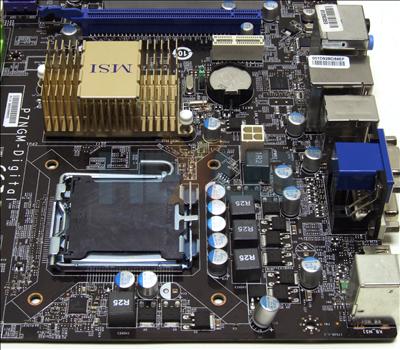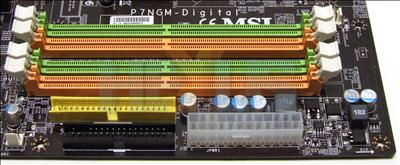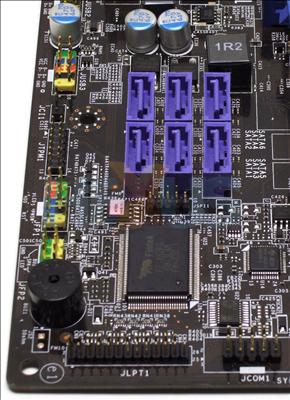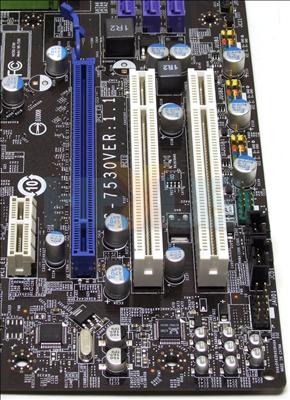MSI's P7NGM Digital - mATX GeForce 9300
MSI presents the P7NGM Digital in the expected micro-ATX form-factor that measures 244mm x 244mm. The layout looks nice and clean on first glance, helped by the lack of component clutter around the CPU area.
A close-up of area shows that MSI imbues this model with Japanese-made all-solid caps, which is nice.
We like the fact that the single-chip design, housing a GeForce 9300 core in this case, is cooled by a passive heatsink. It's not particularly large or ornate as heatsinks go and its job is to keep a core that can draw some 30-32W cool under load.
Perhaps it was our sample model lacking the proper qualification but the board would switch off after a few moments of running a stability test - the heatsink becoming dangerously warm to the touch. Applying directed airflow to the area solved the problem, but we've yet to determine whether it was a sample-specific issue. We wonder how hot a GeForce 9400-toting MSI heatsink would get?
MSI, wisely, chooses to run with DDR2 memory support. The P7NGM Digital supports four slots with RAM running at up-to 800MHz speeds. The IGP's performance is inextricably tied in with it, of course, so the greater the bandwidth the higher the performance. Knowing this, DDR2-1,066MHz support would have been preferable.
The three most-common ports are sensibly put to one side, within easy reach, and NVIDIA provides PATA support without manufacturers having to specify add-in controllers, as per the Intel G45 chipset.
Colour-coded pins make attaching fiddly wires a simpler job than it can be on some motherboards. Six SATA2 ports are all lined up together, but we'd preferred one to be kept aside as routing for a rear-mounted eSATA port.
Being mATX-sized means that expansion slots are at a premium. A single PCIe x1 sits to the left of the x16's, and two further PCIc make up the P7NGM's complement. Installing a card with a double-width cooler - GeForce GTX 260 or Radeon HD 4870, for example - would cut off access to the first PCIc slot, but that would be no real loss.
As per the architecture look, a GeForce 8400 GS or GeForce 8500 GT can be installed and then teamed up with the on-board graphics for additional framerate headroom, although exactly how much you will receive depends upon the game in question. HybridPower, though, is missing here.
MSI adds in HDMI, DVI, VGA, FireWire, four USB2.0 ports, Gigabit LAN and sound ports to the rear I/O section. Decent options for a motherboard that's kind of aimed at the HTPC market.








